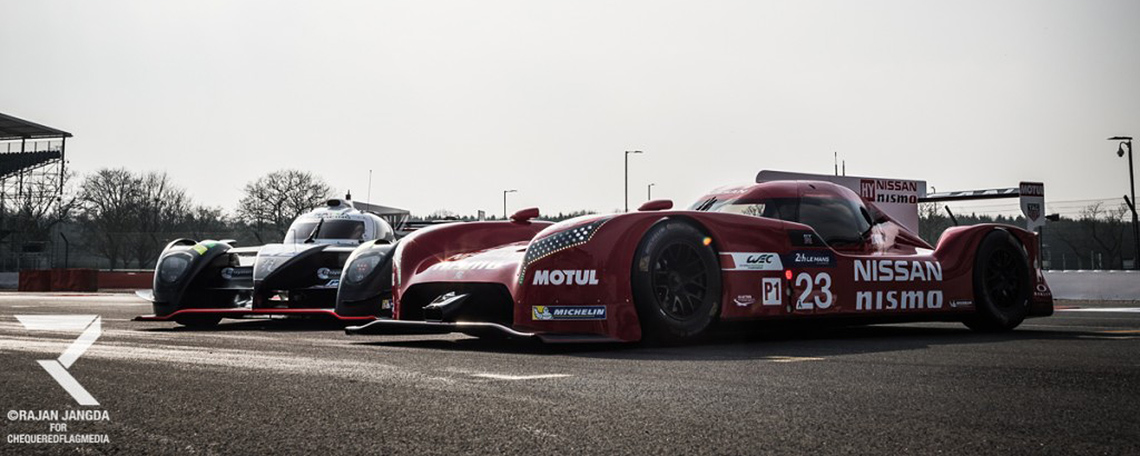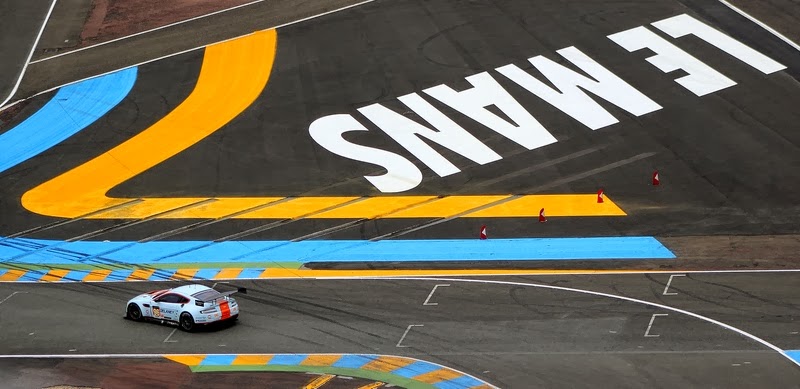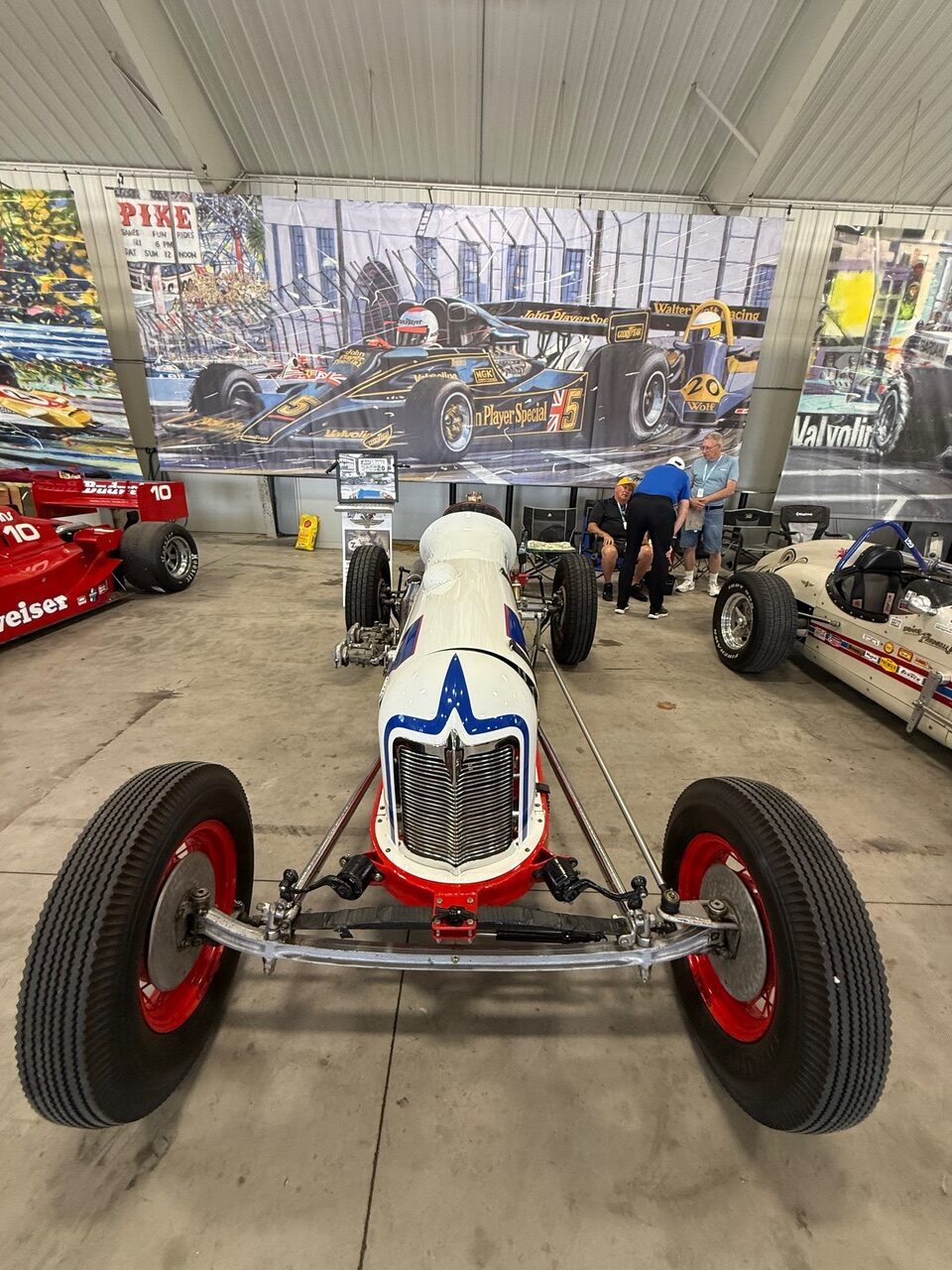I wrote this after Le Mans 2011 – the epic battle between Audi and Peugeot. It is reproduced here by kind permission of www.fourtitude.com. All photos reproduced courtesy of George Achorn with many thanks.
 Having now sniffed success in the top category, Dave Maraj (also a Porsche and then Audi dealer) secured an Audi R8 for the start of the 2001 season. The team had several podium finishes in the ALMS that year, but suffered clutch issues at Le Mans after eight hours. 2003 saw the team take it’s first ALMS victory and an excellent third place on it’s return to Le Mans after sitting out 2002. The 2004 season was a demonstration in efficiency with the team winning almost all of the ALMS races. With Brad at the helm of a team that was now the envy of the racing fraternity, they really started to get into their stride with the fearsome and bulletproof Audi R8. Another third place at Le Mans only strengthened Maraj’s resolve to come back for the win, and by season’s end, a second car had been added to the team.
Having now sniffed success in the top category, Dave Maraj (also a Porsche and then Audi dealer) secured an Audi R8 for the start of the 2001 season. The team had several podium finishes in the ALMS that year, but suffered clutch issues at Le Mans after eight hours. 2003 saw the team take it’s first ALMS victory and an excellent third place on it’s return to Le Mans after sitting out 2002. The 2004 season was a demonstration in efficiency with the team winning almost all of the ALMS races. With Brad at the helm of a team that was now the envy of the racing fraternity, they really started to get into their stride with the fearsome and bulletproof Audi R8. Another third place at Le Mans only strengthened Maraj’s resolve to come back for the win, and by season’s end, a second car had been added to the team. Prior to the 2006 season, and with the wraps about to be taken off the new Audi R10 TDi, Brad was now in a good political position within the Audi Sport organization to lobby hard for the diesel cars to come to America. Together with the key people at Audi Sport, Champion and Joest, it was decided to do a factory programme and thus was born Audi Sport North America. “The R10 took pole at Sebring, and won the race – barely. Due to resources, we wouldn’t get the car back in the States until after Le Mans, and there were three races to cover with the R8 until then. Our task was to stay on target with the R8 and win those races at all costs, which we did. I accepted that my role would change when the diesels came. There would now be an engineer for each car and I would become Technical Director. Until that point I had been race engineer for every project that Champion Racing had ever done.
Prior to the 2006 season, and with the wraps about to be taken off the new Audi R10 TDi, Brad was now in a good political position within the Audi Sport organization to lobby hard for the diesel cars to come to America. Together with the key people at Audi Sport, Champion and Joest, it was decided to do a factory programme and thus was born Audi Sport North America. “The R10 took pole at Sebring, and won the race – barely. Due to resources, we wouldn’t get the car back in the States until after Le Mans, and there were three races to cover with the R8 until then. Our task was to stay on target with the R8 and win those races at all costs, which we did. I accepted that my role would change when the diesels came. There would now be an engineer for each car and I would become Technical Director. Until that point I had been race engineer for every project that Champion Racing had ever done. “Now Joest has equipment here, as do I, they’ve got a guy here and I can help with organization and support, then react to whatever Audi wants to do. 2010 to 2011 the pressure was on as we were testing the first R18 TDI right up to the end of December. Even as we were racing the R15+ at Sebring this year, the R18 was testing at Homestead simultaneously. Now we go Le Mans. The car is swift, fast, strong, reliable, robust, raceable. Testing here in our conditions makes the race car better. The testing results here are very definite and immediate. Road Atlanta – Spa model. It’s a match made in heaven. Some of the corners there give comparable data for Le Mans too – a little elevation change, maximum, weird, hard, high axle, ride height and braking situations like turn 10 give data that is immediately transferable. Now that we have figured out how we like to use these racetracks, it’s brilliant.”
“Now Joest has equipment here, as do I, they’ve got a guy here and I can help with organization and support, then react to whatever Audi wants to do. 2010 to 2011 the pressure was on as we were testing the first R18 TDI right up to the end of December. Even as we were racing the R15+ at Sebring this year, the R18 was testing at Homestead simultaneously. Now we go Le Mans. The car is swift, fast, strong, reliable, robust, raceable. Testing here in our conditions makes the race car better. The testing results here are very definite and immediate. Road Atlanta – Spa model. It’s a match made in heaven. Some of the corners there give comparable data for Le Mans too – a little elevation change, maximum, weird, hard, high axle, ride height and braking situations like turn 10 give data that is immediately transferable. Now that we have figured out how we like to use these racetracks, it’s brilliant.” The R18 emerged as a breath of fresh air. . The car is clean sheet design with no hardware carryover. “The only things partially carried over are some of the data channels. As far as the car goes, in terms of architecture, engine, turbo, gearbox, they’re all different now. We as a working group are used to rapid evolution and we just don’t get tied to too much convention. Things change and we may have different data or software or a new version of a component, but that’s just how it is.”
The R18 emerged as a breath of fresh air. . The car is clean sheet design with no hardware carryover. “The only things partially carried over are some of the data channels. As far as the car goes, in terms of architecture, engine, turbo, gearbox, they’re all different now. We as a working group are used to rapid evolution and we just don’t get tied to too much convention. Things change and we may have different data or software or a new version of a component, but that’s just how it is.” Like many others before him, Brad has experienced both heartache and heaven at La Sarthe. He is a veteran who knows the ropes, knows who to talk to, knows how to read the tyres and the evolving track. He is at once both old school and contemporary. Going back year after year might become arduous for some, but those aren’t the kind of members you’ll find on the Audi squad. It all starts with preparation. “The older you get, the more you realize how special it is – it’s a gift and you might not get to do it again. I always want to do better and people who know me, know that from May to June, this is what I’m going to be doing. Hopefully. I don’t let anything conflict me. It’s the beginning and end of my year. As race week comes into view you have an idea of how you feel, but it’s strictly internal. You don’t share that with anyone. You subliminally and directly try to push your colleagues up and forward as much as possible. Le Mans is like running in front of a boulder that’s rolling down a hill. If you can gain ten steps, you can breathe a little bit. If you can gain twenty steps, you can breathe a little bit more and then you can start to double check things. The best way to be prepared for it is to be prepared for anything.
Like many others before him, Brad has experienced both heartache and heaven at La Sarthe. He is a veteran who knows the ropes, knows who to talk to, knows how to read the tyres and the evolving track. He is at once both old school and contemporary. Going back year after year might become arduous for some, but those aren’t the kind of members you’ll find on the Audi squad. It all starts with preparation. “The older you get, the more you realize how special it is – it’s a gift and you might not get to do it again. I always want to do better and people who know me, know that from May to June, this is what I’m going to be doing. Hopefully. I don’t let anything conflict me. It’s the beginning and end of my year. As race week comes into view you have an idea of how you feel, but it’s strictly internal. You don’t share that with anyone. You subliminally and directly try to push your colleagues up and forward as much as possible. Le Mans is like running in front of a boulder that’s rolling down a hill. If you can gain ten steps, you can breathe a little bit. If you can gain twenty steps, you can breathe a little bit more and then you can start to double check things. The best way to be prepared for it is to be prepared for anything. Can we do five stints? Hell yeah. We stayed on certain compounds until late in the night. There was a bit of controversy, but it got overruled . It was working – one more stint. We went into happy hour early in the morning, put the softs on just right and got fastest lap in that stint. You know you’re really matching it when you’re doing that. It takes a lot of experience and people think you’re nuts. But you can’t give a shit what they think.”
Can we do five stints? Hell yeah. We stayed on certain compounds until late in the night. There was a bit of controversy, but it got overruled . It was working – one more stint. We went into happy hour early in the morning, put the softs on just right and got fastest lap in that stint. You know you’re really matching it when you’re doing that. It takes a lot of experience and people think you’re nuts. But you can’t give a shit what they think.”“This year was incredible because it was a track position and fuel strategy race until the very end. It was elemental. It was the raw, basic, purest elements of sports car racing. It’s unbelievable how high the level of competition was this year. The final stop: we were just in the fuel window to finish the race. We could have gone longer but we had a slow puncture. We came in with twenty one seconds in hand. Fuel hose on. We were three quarters of the way through fuelling when the Peugeot appeared; stopped in its box, fuel hose on. For 10 seconds the fuel hoses were on at the same time – that’s how close it was. Our hose came off and the pit stop started. The first two wheels are on. We are going for the third when the fueller pulls off the Pug. Our fourth wheel is going on and the Pug starts to move. The crowd is in a frenzy! We dropped off the jacks and beat them out by a hundred metres – with 40 minutes to go in a twenty four 24 hour race. But that was it. That was the moment. The guys killed it. The perfect stop. It was fast, smooth and the pressure of the whole world watching didn’t affect them. The psychological closer to the whole thing was sending out Lotterer ahead of Pagenaud on four new tires. Incredible.
Incredible indeed. Kettler and his young team had won against the odds. It was a gritty, emotional and tough race, fought under immense pressure from the team, the fans, themselves and a sometimes combative opponent. And this one was done without takes, without stunt drivers and without a script. In the final analysis then, it wasn’t a Steve McQueen movie after all.
Click here to read about Brad’s part in the Champion Racing 2005 Le Mans win



